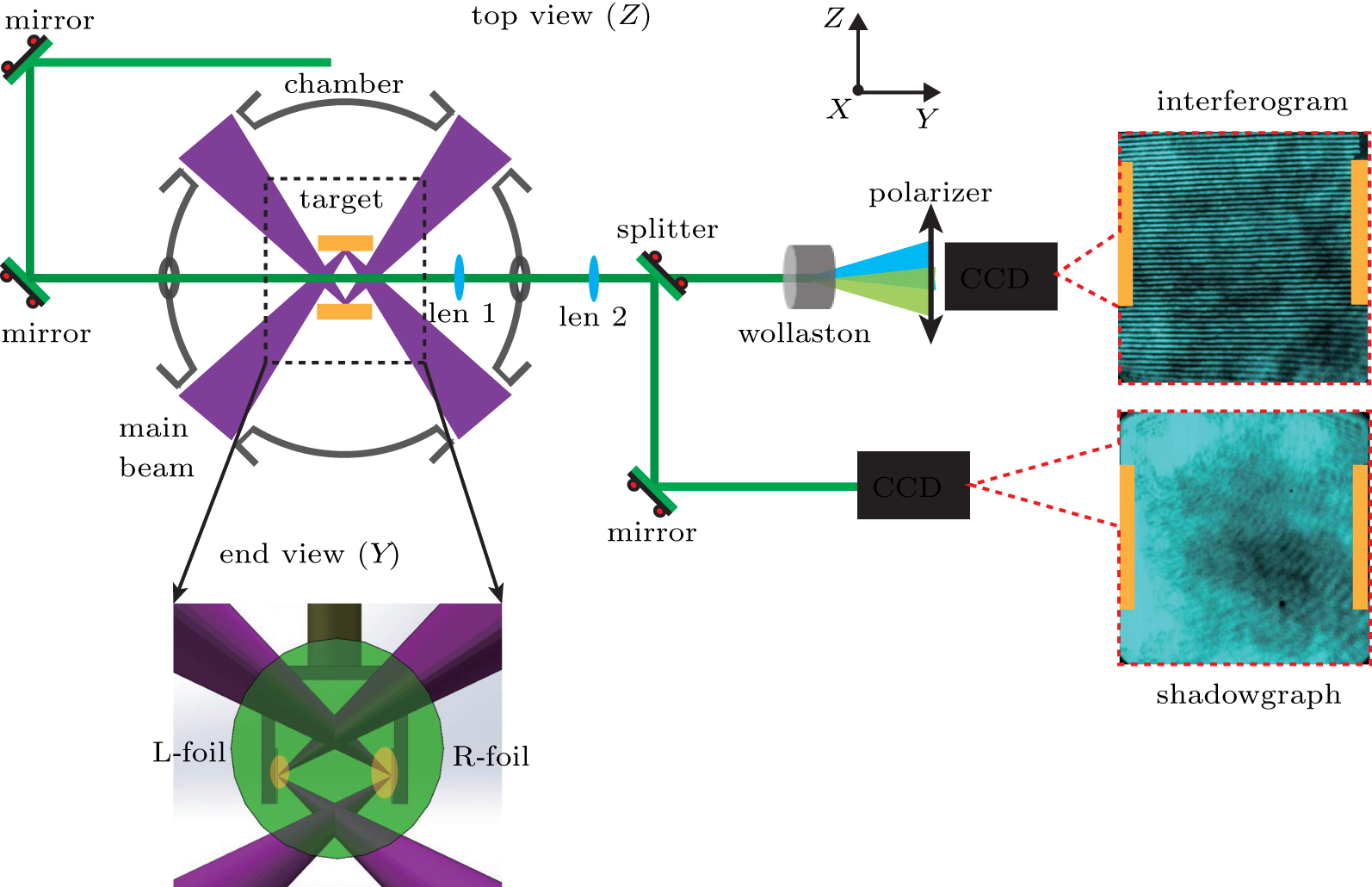Application of multi-pulse optical imaging to measure evolution of laser-produced counter-streaming flows
(color online) Schematic view of experimental setup. Main laser beams divided into two bunches heated on the facing surfaces of the target to generate counter-streaming flows. The interaction of the two counter-streaming flows was measured by Nomarski interferometry and shadowgraphy. A 527 nm, 30 ps laser beam passing through the interaction region was used as a probe beam, which was split into two beams by a beam splitter after passing through the second imaging lens. One was for Nomarski interferomety to obtain the electron density, and the other was for shadowgraphy, which is sensitive to the second derivative of the electron density.[
